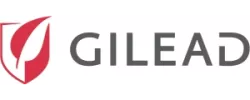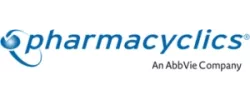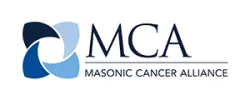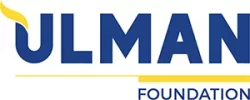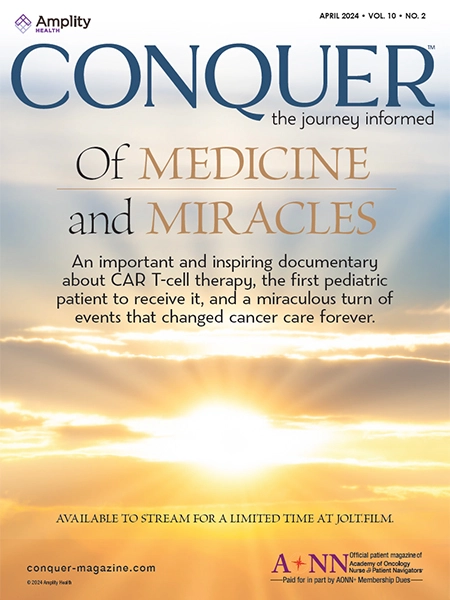
With a full schedule of engaging activities awaiting them on Saturday, oncology navigators in attendance greeted the day early, abuzz over breakfast. Sessions covering navigation acuity, precision medicine, palliative care, and access to clinical trials for adolescents and young adults provided abundant learning opportunities. Enhancing the day’s events were Sponsored Knowledge Exchange Sessions and time to peruse the wide array of offerings in the Exhibit Hall.
Acuity Tool Set to Unlock Insights into Oncology Patient Care
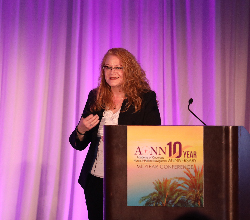
Any oncology navigator could attest to the myriad responsibilities that come with the multifaceted role, and how that role changes depending upon individual patient needs. The ability to calculate the level of care needed for a particular patient across the care continuum could prove invaluable for oncology navigation programs. Through a collaboration with Astellas, AONN+ is working to develop, standardize, and implement an evidence-based oncology navigation acuity tool that is intended to be applicable across all settings and types of navigation.
Opening the session with a round of thanks to the 11 members of the National Navigation Acuity Team, of which she is Co-Chair, Danelle Johnston, MSN, RN, ONN-CG, OCN, Chief Nursing Officer and Senior Director of Strategic Planning and Initiatives for The Lynx Group/AONN+, also thanked others involved in the project. She stated that the women involved “have given 6 months of intensive work to the effort,” and although the tool isn’t ready to roll out yet, they “are excited about the work thus far.” Ms Johnston then provided a history of the team and an overview of its work, up to its current state of development.
Ms Johnston was joined by fellow AONN+ member and National Navigation Acuity Team member Cheryl Bellomo, MSN, RN, OCN, ONN-CG; and Wendy Latash, PhD, Director of Patient Experience and Outcomes at Astellas and National Navigation Acuity Team member. The 3 women hosted a session that provided a broad definition of acuity, explaining what an acuity tool would do for patients and navigators, and how such a tool would be employed in practice.
The acuity tool is aimed at evaluating each patient’s level of need based upon the intensity and severity of their disease, and by doing so, gaining the ability to more accurately assess a navigator’s caseload. In short, the proposed tool “will characterize the intensity of the navigation workload, aid in the allocation of navigation resources, and measure the effectiveness of navigation on patient outcomes.” However, “acuity,” as the team defined it, “is not productivity.” It is an attempt to balance the navigator’s workload while also demonstrating the value of navigation in a quantitative fashion and fulfilling the navigator’s role of removing barriers to care.
The proposed acuity measurement will incorporate navigation core competencies, national oncology standards, and the AONN+ standardized navigation metrics to provide a validated resource that fosters sustainability in navigation programs. Applicable across settings and roles, the tool will be uncomplicated and easy to implement for navigation teams, bringing them closer to the goal of providing safe, effective, and efficient care.
“If you’ve seen 1 navigator program, you’ve seen 1 navigator program,” Ms Johnston quipped, however. With that in mind, one of the most significant challenges in creating the tool has been tailoring it to be suitable for use by a wide range of navigators in various settings, she said, adding that because “patients are not all the same in terms of their intensity of needs and severity of illness,” the tool must also maintain its ability to home in on the unique needs of each patient’s situation.
A particularly effective element of the presentation was a video dramatization of a nurse navigator and a patient using a distress measurement tool to demonstrate how a similar instrument could be used in clinical settings to assess level of acuity and provide appropriate recommendations, or to facilitate access to adjunct therapies or resources.
At the conclusion of the prepared remarks, the presenters opened the floor to a robust question-and-discussion period, with many audience members expressing their gratitude for this initiative.
In addition to the presentation, the team members took the opportunity to host an acuity focus group during the 2019 AONN+ Midyear Conference. Through the focus group, they hoped to gain navigators’ insights on the potential design and function of the acuity tool, as well as take a closer look at common barrier categories and discuss possibilities for weighing specific barriers for acuity measurement.
Personalizing Cancer Care: The Basics of Precision Medicine
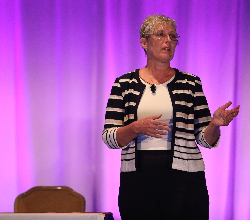
Helping to revolutionize oncology care, precision medicine uses patients’ genetic information to inform healthcare decisions, thereby customizing care to the individual. As genetic counseling and testing become more prevalent to ensure patients are receiving the optimal treatment at the optimal time, the oncology navigator’s role in providing education and counseling, managing expectations, and coordinating care also grows in this area. It is therefore imperative that navigators are armed with the information on the fundamentals of precision medicine to empower patients as they move toward tailored treatment. Panelists Sherri Millis, PhD, MS, and Frank dela Rama, RN, MS, AOCNS, AGN-BC, provided an overview of the topic.
In addition to the long-standing tools in the risk management and treatment arsenal such as obtaining a patient’s family history and conducting a physical assessment, it is now possible to include a genetic risk assessment, genetic counseling, genetic testing, and tumor profiling. From there, a targeted therapy can be selected according to information gleaned about the patient. Precision medicine, as Dr Millis pointed out, focuses on “treating the unique disease that is each patient’s cancer.”
Central to precision medicine are the concepts of germline and somatic gene mutations. A germline gene mutation is inherited, causing an increased risk for hereditary cancer, which comprises approximately 5% to 10% of all cancers. Somatic mutations are noninherited gene alterations that can lead to the development of cancer. Understanding these differences is important, because crucial decisions regarding genetic testing and further treatment may be made on the basis of this distinction. To illustrate this concept, the presenters showed 2 case study scenarios in which patients potentially were BRCA positive.
Next generation sequencing (NGS) represents a major advance in genetic testing. NGS has the ability to analyze a multitude of genes or DNA fragments simultaneously, saving time and money. The technology, however, is not without disadvantages, one of which relates to interpretation of results. Which laboratory, and which geneticist within the laboratory, interprets the results can impact the analysis provided, and thus, the care the patient receives. Other limitations are related to cost and the possibility with larger gene panels that abnormalities can be identified for which the clinical significance remains unknown.
Highlighting the importance of genetic testing, the presenters discussed viewing genetics as a cancer biomarker. Of similar importance to testing for microsatellite instability in colon cancer, EGFR mutations in lung cancer, or human epidermal growth factor receptor 2 in breast cancer, germline genetic testing provides critical information. Not only does it inform cancer risk, screening, prevention, and treatment, it also allows family members to understand their risk through cascade testing.
Although the benefits of genetic testing are largely accepted, not all patients who are candidates have access to it. Barriers to genetic testing can include a lack of access to genetic counseling or targeted therapies, a poor or nonexistent organizational process, or concerns on the part of the healthcare provider. Such concerns can run the gamut from being doubtful of a positive result to not wanting to overburden the patients or themselves with worries about the complexity and costs of the tests, according to the presenters. With the potential to alleviate some of the barriers, including cost and other hurdles within the healthcare system, direct-to-consumer genetic testing is a relatively new option for patients. Oncology navigators can help to identify and address barriers by educating and counseling patients while helping to coordinate their care.
The advent of precision medicine has marked a paradigm shift away from the one-size-fits-all model of care to treatment that is customized to conform to each patient’s individual needs. With this shift comes the need for all patients with breast, epithelial ovarian, fallopian tube, or primary peritoneal cancer to be referred for genetic counseling and testing so that they can benefit from this personalized care.
Improving Adolescent and Young Adult Enrollment in Cancer Clinical Trials
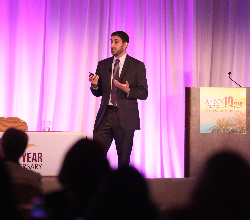
For patients with cancer, clinical trials have the potential to help determine the optimal treatment to improve survival and health-related quality of life. Adolescents and young adults (AYAs)—defined by the National Cancer Institute (NCI) as persons 15 to 39 years of age—with cancer are underrepresented among clinical trial enrollees. Although the disparity between AYAs and other age-groups enrolled in cancer trials has been known to exist for more than 20 years, the imbalance persists, according to Michael Roth, MD, Associate Professor of Pediatrics, Director of the Childhood Cancer Survivorship Program, and Co-Director of the Adolescent and Young Adult Program Division of Pediatrics at The University of Texas MD Anderson Cancer Center, Houston, who presented his research findings and clinical work as a pediatric oncologist in a general session. Dr Roth thanked AONN+ for inviting him to speak on this topic—one to which it was evident that he is passionately committed.
The availability of new and better treatments has allowed for improved survival rates among patients with cancer over the past 2 decades. An examination of these rates by age-group, however, reveals that the AYA population has seen the lowest level of improvement, according to statistics from the NCI’s Surveillance, Epidemiology, and End Results (SEER) Program. In addition, 5-year survival rates for some cancers, such as acute lymphoblastic leukemia, have been largely stagnant over the years, Dr Roth said.
Of patients with cancer enrolled in clinical trials, AYAs consistently display the lowest enrollment numbers, with those aged in their twenties showing the least patients enrolled, according to NCI and SEER statistics. Finding a solution to this problem requires an examination of the barriers that stand between AYAs and cancer trials. Some of the main issues stem from the community, and a lack of awareness about, or trust in, clinical trials; society, with a lack of access to trials due either to logistic considerations such as transportation or location, or because of inadequate or no insurance; communication, consisting of cultural or language barriers; and healthcare providers, for whom considerations like limited time and resources, along with institutional barriers, can represent obstacles, according to Dr Roth.
A paucity of AYA-specific trials, or of studies with inclusion criteria that encompass AYA age-groups, also contributes to the problem. In addition, AYAs are less likely to receive treatment at NCI-designated cancer centers, where clinicians have greater access to research resources and clinical trials, and instead receive treatment at community-based centers. That itself is not the problem, said Dr Roth, but rather, it is an indication that clinical trials must reach out to those areas where AYAs seek treatment.
Fortunately, as barriers are identified, efforts are underway to overcome them. The Children’s Oncology Group (COG) AYA Responsible Investigator Initiative seeks to increase AYA enrollment in clinical trials by developing a network of “AYA Champions.” Through the initiative, each COG center identifies an AYA “Responsible Investigator” who is tasked with enrolling AYAs in trials. Among other strategies to enhance enrollment, COG centers hold enrollment workshops to address barriers that are common among the sites, sharing resources and approaches to surmount them.
The COG AYA Responsible Investigator Initiative has uncovered opportunities to increase AYA trial enrollment through greater collaboration with medical oncology; more resources, including funding and programs; and through support from cancer center administrators. A common denominator in these opportunities is the designation of an AYA Champion, whose focus would be on this population and ensuring optimal trial enrollment among its members.
Another initiative is aimed at assessing and addressing barriers to AYA trial enrollment at NCI Community Oncology Research Program sites through a 2-stage plan.
Navigators’ role allows them to have a keen understanding of the patient perspective, as well as inside knowledge of the healthcare institutions for which they work. This, paired with their position on the frontlines of clinical trial enrollment, makes oncology navigators well-poised to provide valuable insights on barriers and facilitators to optimizing trial participation among AYAs. According to Dr Roth, few studies have assessed navigators’ insights on this topic, despite the likelihood that they have novel and valuable approaches to share. He raised the possibility of AONN+ getting involved in research to target the problem of AYA underenrollment in trials.
In a truly moving talk, Dr Roth appealed to oncology navigators in particular, and encouraged individuals interested in the work he is doing to reach out to him to discuss possible interventions they could pursue in collaboration. He urged those interested to contact him at
With close collaboration among medical oncology, pediatric oncology, research associates, navigators, and administrators, lessening the disparities in enrollment between AYAs and other age-groups becomes an attainable goal, Dr Roth concluded.
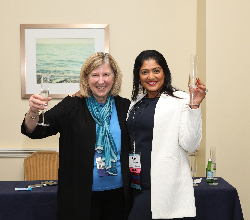
The afternoon was topped off by a visit to the Exhibit Hall for one last look at all the products and services there, and for a special treat—gelato cups or cones. Truly a sweet ending!
Closing out a fulfilling day brimming with new insights, attendees dispersed to discuss their respective discoveries and revelations over dinner and either stroll along the beach, explore all San Diego has to offer, or simply indulge in the activities that are so rare for navigators—rest and relaxation.






